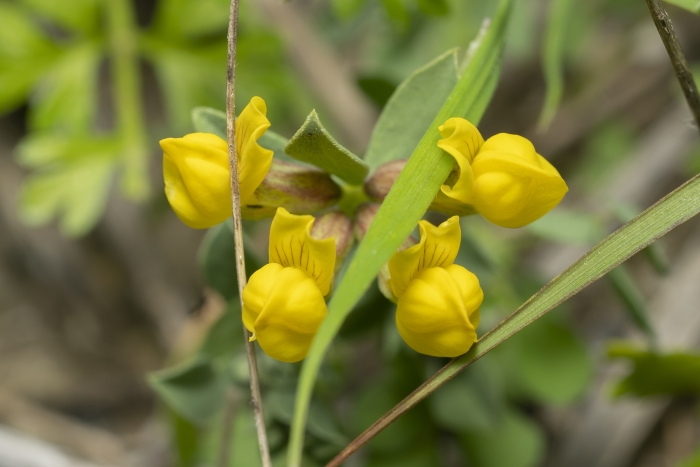Gorse Broom
(Lotus cytisoides)
Gorse Broom (Lotus cytisoides)
/
/

© Eleftherios Katsillis
CC BY 4.0
Image By:
© Eleftherios Katsillis
Recorded By:
Copyright:
CC BY 4.0
Copyright Notice:
Photo by: © Eleftherios Katsillis | License Type: CC BY 4.0 | License URL: http://creativecommons.org/licenses/by/4.0/ | Uploader: eleftherioskats | Publisher: iNaturalist |




















Estimated Native Range
Summary
Lotus cytisoides, commonly known as the Gorse Broom, is a perennial herb native to Mediterranean coastal areas, particularly in sandy and rocky soils. It is well-adapted to scrubby areas, coastal dunes, and open woodlands. Typically, it grows to a modest height of up to 2 feet (0.6 meters) with a similar spread, forming a low, bushy mound. The plant features compound leaves that are small and gray-green, providing a fine-textured appearance. From late spring to summer, it produces bright yellow, pea-like flowers that are moderately showy and attract pollinators.
Gorse Broom is valued for its drought tolerance and ability to thrive in poor, sandy soils, making it suitable for xeriscaping and restoration projects. It is often used in rock gardens, as ground cover, and for erosion control on slopes. In cultivation, it requires well-drained soil, minimal water once established, and full sun to part shade. While generally low-maintenance, it can be susceptible to root rot in overly moist conditions.CC BY-SA 4.0
Gorse Broom is valued for its drought tolerance and ability to thrive in poor, sandy soils, making it suitable for xeriscaping and restoration projects. It is often used in rock gardens, as ground cover, and for erosion control on slopes. In cultivation, it requires well-drained soil, minimal water once established, and full sun to part shade. While generally low-maintenance, it can be susceptible to root rot in overly moist conditions.CC BY-SA 4.0
Plant Description
- Plant Type: Herb, Subshrub
- Height: 1.5-3 feet
- Width: 1.5-3 feet
- Growth Rate: Moderate
- Flower Color: Yellow
- Flowering Season: Summer
- Leaf Retention: Deciduous
Growth Requirements
- Sun: Full Sun
- Water: Medium, High
- Drainage: Medium, Fast
Common Uses
Border Plant, Drought Tolerant, Low Maintenance
Natural Habitat
Mediterranean coastal areas, particularly in sandy and rocky soils
Other Names
Common Names: Kidney Vetch
Scientific Names: , Lotus cytisoides, Lotus allionii, Lotus argolicus, Lotus coronillifolius, Lotus creticus subsp. cytisoides, Lotus creticus subsp. cytisoides, Lotus creticus var. allionii, Lotus creticus var. bonifaciensis, Lotus creticus var. cytisoides
GBIF Accepted Name: